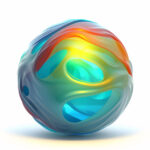
What are the properties and behavior of quarks, the building blocks of protons and neutrons?

What are some challenges in editing and manipulating vector graphics?

How do vector graphics contribute to the field of architecture and engineering?
Vector graphics play a crucial role in the field of architecture and engineering, offering a range of benefits that enhance precision, efficiency, and visualization. These scalable graphics are created using mathematical formulas, allowing them to be easily manipulated and resized without any loss of quality. From aiding in the creation of precise blueprints to revolutionizing 3D visualizations, vector graphics have become an indispensable tool for professionals in the architecture and engineering industry.
Can vector graphics enhance precision and efficiency in architectural and engineering designs?
Absolutely! Vector graphics are known for their ability to maintain precision and accuracy throughout the design process. Unlike raster images, which are made up of pixels, vector graphics rely on mathematical equations to define each element. This means that lines and shapes can be scaled up or down without losing clarity or detail. Architects and engineers can rely on vector graphics to create intricate and precise designs, reducing the risk of errors and saving valuable time in the process.
What advantages do vector graphics offer in the field of architecture and engineering?
Vector graphics offer several advantages in the field of architecture and engineering. First and foremost, their scalability allows for easy manipulation and resizing, making them ideal for designing blueprints and floor plans. Additionally, vector graphics can be easily edited, allowing for quick modifications and adjustments to be made during the design process. Furthermore, these graphics can be easily shared and collaborated on, fostering effective communication between team members. Finally, vector graphics are resolution-independent, which means they can be printed or displayed at any size without compromising image quality.
How do vector graphics revolutionize architectural and engineering visualization?
Vector graphics have revolutionized architectural and engineering visualization by providing a realistic and immersive experience. With the help of specialized software, vector graphics can be transformed into stunning 3D visualizations, allowing architects and engineers to create lifelike representations of their designs. This enables better communication with clients and stakeholders, as they can easily visualize the end result. Additionally, vector graphics can be used to simulate lighting conditions, textures, and materials, providing a comprehensive understanding of how the final project will look.
Are vector graphics the future of architecture and engineering design?
Absolutely! As technology continues to advance, vector graphics are becoming an integral part of the future of architecture and engineering design. With their ability to enhance precision, improve efficiency, and provide realistic visualizations, it is clear that vector graphics will continue to play a significant role in the industry. As software and tools evolve to support these graphics, architects and engineers will rely more heavily on vector-based designs to streamline their workflow and create stunning projects.
In conclusion, vector graphics have proven to be an invaluable asset in the field of architecture and engineering. Their ability to enhance precision, efficiency, and visualization has revolutionized the way professionals in these industries approach their work. As the industry continues to evolve, vector graphics will undoubtedly remain a critical tool in the design process, shaping the future of architecture and engineering.
